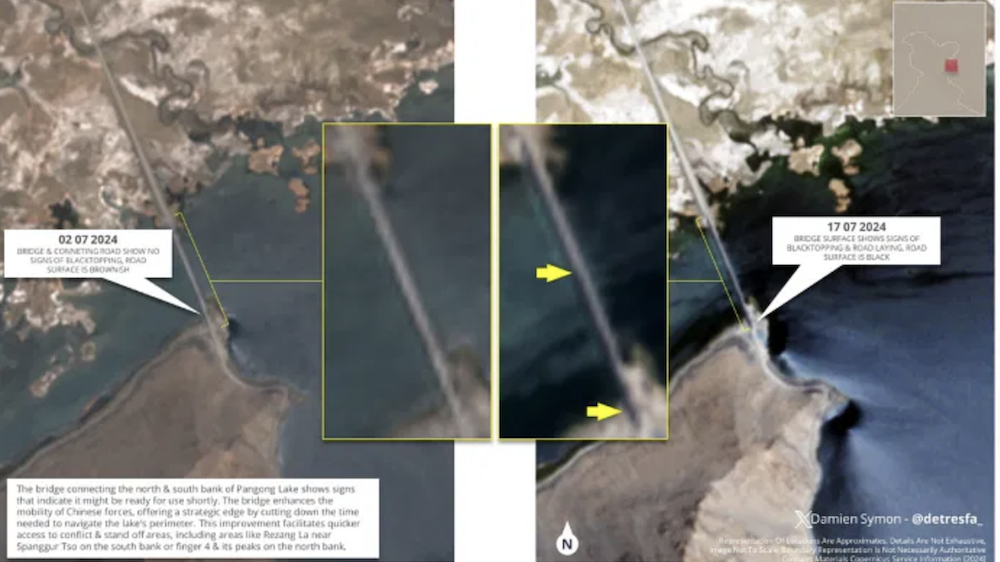Directed by Sonthar Gyal*
Reviewed by Bhuchung D. Sonam
 Sonthar Gyal’s (a young Tibetan filmmaker in Tibet) film The Sun-Beaten Path — which won 2011 Dragons and Tigers Awards at the Vancouver International Film Festival — is in many ways a trenchant criticism of today’s Tibet, where individual Tibetans battle against not only their tragic personal life but also against the overwhelming encroachment on their collective way of life and the wholesale eradication of their ancient culture. Gyal’s picture reminded me of actor-director Sean Penn’s Hollywood film Into the Wild, which combines two popular genres – the road trip and the struggle of man versus nature. It tells to tell about Chris McCandless, a disillusioned young man who discards his comfortable life so he can make his way into the wilderness of Alaska in search of untamed solitude.
Sonthar Gyal’s (a young Tibetan filmmaker in Tibet) film The Sun-Beaten Path — which won 2011 Dragons and Tigers Awards at the Vancouver International Film Festival — is in many ways a trenchant criticism of today’s Tibet, where individual Tibetans battle against not only their tragic personal life but also against the overwhelming encroachment on their collective way of life and the wholesale eradication of their ancient culture. Gyal’s picture reminded me of actor-director Sean Penn’s Hollywood film Into the Wild, which combines two popular genres – the road trip and the struggle of man versus nature. It tells to tell about Chris McCandless, a disillusioned young man who discards his comfortable life so he can make his way into the wilderness of Alaska in search of untamed solitude.
Gyal’s film, however, tells the fate of a grieving and guilt-ridden young farmer on his way back from a pilgrimage to Lhasa after he had killed his mother in a tragic road accident. Nyima, the protagonist, having grown up under a new and sterilized social system, isn’t sufficiently rooted in his culture to give him the strength and fortitude to bear the heartbreaking events he’s facing. This culture is personified in the film by an old man Nyima encounters on the way; the stranger’s funny yet wisdom-laden stories gradually salve his emotional pain. The old man’s genuine compassion, and insistence on helping, finally enables Nyima to return home along the same dirt road where his small tractor killed his mother.
The young Tibetan director’s brilliance lies in locating the film on the harsh, barren and unforgiving landscape cut across by an endless road. The inexorable backdrop magnifies Nyima’s guilt and self-reproach by manifold. The sparse dialogue further enhances the guilt and the sorrow. The dishevelled, stone-faced loner — exceptionally acted by Yeshi Lhadruk — who walks along tarred road, rejects every offer of free ride by the fast-travelling vehicles. “Buses travel too fast,” he says to the old man. “I forget my troubles when I walk.”
Perhaps there’s something seductive about the idea of turning one’s back on civilization and all its baggage, especially in a world that is fast turning into a culvert, where everyone chases their dreams driven by the endless run for money and yet more money. In this sense, Sean Penn’s Into the Wild is an incisive criticism of the contemporary world — its endless rat race, complicated system and fast pace — which drives peace, fulfilment and inner satisfaction to the furthest corners of people’s lives. In the same way, The Sun Beaten Path subtly focuses on a culture where a stranger (in this case, the old man) goes out of his way to help others (Nyima, in the film) as opposed to utter disregard for fellow human beings as happened in Guangzhou in China recently. As many as eighteen people ignored a two-year-old child being crushed by two cars in a hit-and-run case. The kid later died in the hospital.
Without using any clichés and stereotypical images of Tibet, which could necessarily mean monks and monasteries, prayer-flags and prayer wheels or forever-smiling farmers and green pastures, Gyal has clearly managed to get the message of Tibet today across.
Lines of trucks endlessly pass by on the sun-beaten metalled road, but they do not have the power to ease Nyima’s inner problems. When everything turns upside down — and the world becomes an endless grey veil — the only salvation comes from the ancient wisdom that flows from the old man’s mouth.
This, perhaps, is the strongest message that anyone can convey in any creative work. Sonthar Gyal has done this perfectly without overstating or undermining anything.
—
* The Sun-Beaten Path directed by Sonthar Gyal was premiered on 30 October 2011 at the Tibet Film Festival jointly organized by Swiss-based Filming for Tibet and the India Chapter of the Students for a Free Tibet.
Bhuchung D. Sonam can be reached at bhuchungdsonam@gmail.com









